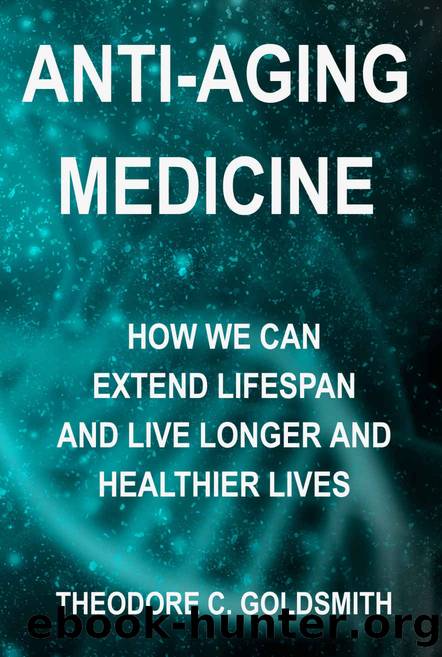Anti-Aging Medicine by Goldsmith Theodore

Author:Goldsmith, Theodore
Language: eng
Format: epub
Publisher: Azinet Press
Published: 2020-08-30T16:00:00+00:00
5. U.S. Health System Summary
The health care industry includes physicians, nurses, hospitals, health insurance, and rehabilitation facilities and when combined with the pharmaceutical industry and medical research efforts represents a huge portion of the economy. We could call the combined industry the health system. Here are some characteristics that affect the situation surrounding aging and treatments for aging and age-related diseases.
Certainty Varies Greatly
As is often said medicine is an art as well as a science and the health system can accommodate activities having a wide range of certainty.
At the top of the certainty range, prescription drugs generally must be certified using clinical trials. The proposing organization specifies a claim regarding the benefit, usually a very narrow claim concerning a specific disease and typically a particular type and even stage of the disease. The proposal specifies the chemical formula of the drug as well as any other information regarding its design and application such as known toxicity.
For clinical trials, a statistically significant group of test subjects and a carefully matched group of control subjects is selected. The drug is administered to the test group and a placebo is administered to the control group. The test is typically administered double-blind meaning neither the patients nor anybody in contact with them or involved in assessing results knows which randomly selected patients got the placebo. Animal testing is often required before human testing.
In some cases, the effects of the drug are obvious (such as in chemotherapy) voiding the double-blind procedure. In some cases, a drug could be compared to an existing drug rather than a placebo. The trial demonstrates effectiveness of the drug in producing the claimed benefit and also produces data on side-effects. Approval by the U.S. FDA is primarily based on the demonstrated benefits and reasonableness of side-effects relative to benefits.
Certification of prescription drugs is very expensive and time-consuming. Many trials fail. The cost and difficulty of the process is directly proportional to the time-scale of the cause and effect situation.
Drugs that are injected or implanted generally require a prescription.
Prescription drugs except for those considered especially dangerous (such as opioids) can be prescribed âoff-labelâ or for purposes other than treating the conditions in the drugâs claim.
Thousands of foods, vitamins, and over-the-counter (non-prescription) medications are available. Some of these, especially vitamins, are known to be necessary to health but are generally present in a âhealthyâ diet. Others are âthought to be of valueâ in treating some disease or condition. Topical âexternal use onlyâ products such as cosmetics and shampoos are generally subject to reduced scrutiny.
At the bottom of the certainty regime, some medications are sold that are essentially known to be ineffective. For example, toenail fungus is mainly a cosmetic problem. An available topical medication uses words like âCureâ on the front of the package along with a picture of the condition. On the back, in the fine print, it says âNot effective on nails or scalp.â
Download
This site does not store any files on its server. We only index and link to content provided by other sites. Please contact the content providers to delete copyright contents if any and email us, we'll remove relevant links or contents immediately.
Inner Engineering: A Yogi's Guide to Joy by Sadhguru(6728)
The Power of Now: A Guide to Spiritual Enlightenment by Eckhart Tolle(5610)
Fear by Osho(4662)
Ikigai by Héctor García & Francesc Miralles(4125)
The Art of Happiness by The Dalai Lama(4063)
The Ultimate Bodybuilding Cookbook by Kendall Lou Schmidt(3886)
Yoga Therapy by Mark Stephens(3704)
The Little Book of Hygge by Meik Wiking(3647)
The Healing Self by Deepak Chopra(3477)
Why Buddhism is True by Robert Wright(3405)
The Hatha Yoga Pradipika (Translated) by Svatmarama(3235)
Being Aware of Being Aware by Rupert Spira(3231)
Shift into Freedom by Loch Kelly(3137)
Wild Words from Wild Women by Stephens Autumn(3095)
Work Clean by Dan Charnas(3055)
Happiness by Matthieu Ricard(2995)
More Language of Letting Go: 366 New Daily Meditations by Melody Beattie(2970)
Yoga Body & Mind Handbook by Jasmine Tarkeshi(2835)
Why I Am Not a Feminist by Jessa Crispin(2697)
